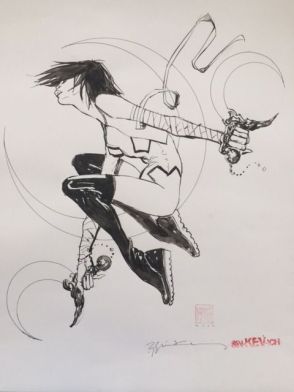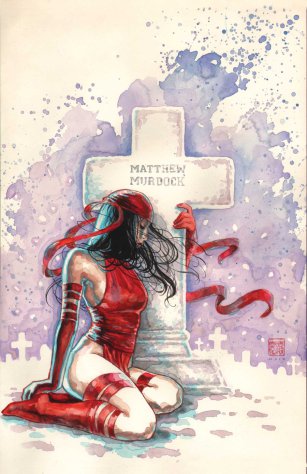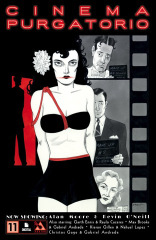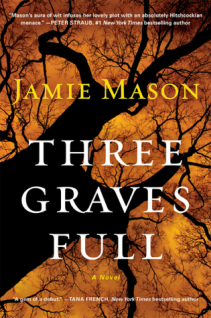 Kabuki by Bill Sienkiewicz
Kabuki by Bill Sienkiewicz
I had missed Bill Sienkiewicz’s work in the 1980s, but I had David Mack; ‘Metamorphosis’ was Mack’s Elektra: Assassin. Both artists combined traditional fine art skills, collage, and traditional comic book style-art in their work. David Mack’s artwork exposed me to comic books as fine art; before, the closest at this point was Sam Keith and Travis Charest. David Mack was the first sequential artist whose name I knew and followed from project to project.
Both Kabuki’s ‘Metamorphosis’ and Elektra: Assassin are stories of teenage rebellion. In their respective storylines, Kabuki and Electra begin their journey awakening in a mental institution disjointedly recalling their origin, and eventually must escape. While Elektra escapes and thwarts an evil ninja clan’s plan to take-over the United States, Kabuki spends the entirety of her storyline in the mental institution. In Kabuki’s case, though, the institution reprograms secret agents to work in other organizations. While escaping Kabuki is pursued by released inmates and former teammates. Kabuki’s fights are battles against intrusive ideologies.
 Elektra by David Mack
Elektra by David Mack
By defeating the anthropomorphized points of view, Kabuki rejects the limitations of philosophy. For Kabuki, a myopic view of the world does not fully explain the world. Returning to Elektra, by the end of her journey she has defeated the plan of The Beast, an evil entity worshiped by an evil ninja clan. Having been groomed by outside forces to be a vessel for The Beast, Elektra’s defeat of the creature is her own statement of anti-establishment. For Elektra and Kabuki their stories are about rejecting the societal expectations, which others use to groom them to be killing machines.
Advertisements Share this:





